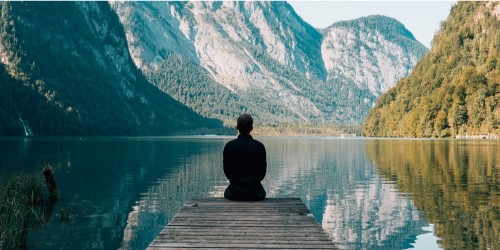
John MacKinnon’s immersive shamanic travel experiences are born from a deep connection to the Amazon’s healing traditions and his personal journey with revered shamans like Don Agustin Rivas Vasquez.
In his interview with MysticMag, John shares how his programs, including the “Magic of the Amazon” and Curandero Training, guide participants through traditional healing and visionary experiences. Inspired by his transformative encounters in the jungle, John began offering these life-changing trips to share the profound spiritual practices of the Amazon and beyond.
His commitment to cultural respect and ethical shamanic exchange ensures a transformative journey for those seeking healing, spiritual growth, and deeper connections with ancient wisdom.
What inspired you to create immersive shamanic travel experiences?
Back in the 1990s, when I first visited the Amazon to work with Don Agustin Rivas Vasquez, the renowned shaman, and ayahuascuero, the experience of immersing myself in shamanic work in a traditional setting, amid the sights and sounds of the jungle became one of the peak experiences of my life.
Before my first visit was over, I knew that I wanted to share this kind of experience with others. I occasionally brought someone with me when I returned to the Amazon, but it wasn’t until many years later, in 2016, that I officially set up an organization to do this sort of travel.
Our first trip at that time was not to the Amazon, but to Mongolia, to work and travel throughout the steppes with three Mongolian shamans. Soon afterward, we resumed travel to Peru to both the Amazon region and to the Andes.
How do the “Magic of the Amazon” programs introduce participants to traditional healing practices?
Before accepting anyone for our Amazon retreat, we require an interview. This is both to assess them for suitability and to answer questions. I want to make sure that their motivation to join us is not to take a psychedelic vacation, but out of a genuine interest in the shamanic work or healing. I also want to make sure that any participants have a basic understanding of core shamanism, and if they don’t, to help them get familiar with the basics first.
Once we arrive in the jungle at the shaman’s camp, there are a number of introductory ceremonies and practices that take place to prepare them for the more immersive work to follow. This includes participation in preparing medicinal and aromatic herbs for an herbal bath that marks their official welcome to the jungle, a Huito ceremony, which dyes our skin blue-black to concentrate the energies of the rainforest to our senses and which marks us as a group, or tribe, and finally a purging ceremony with the medicine Oje, which though somewhat unpleasant, purifies us for the work ahead. All of this takes place before working with any of the visionary medicines.
Throughout this preparatory process, we discuss the work to come and answer questions about the traditional practices and what to expect once the deeper work begins. In the Amazon, this deeper work is largely with the great teaching of medicine,
Ayahuasca. Ayahuasca not only can heal, but it can also provide great insights that can inspire one to live differently and change one’s outlook. It can also teach the more seasoned user what other plants and medicines can be used to heal others.
Can you share what the Curandero Training program entails for aspiring healers?
Our Curandero Training is a fairly new addition to our offerings. It was at the urging of the shaman we work with now, Viejo Rivas, Don Agustins son. He wanted to be able to teach those who have had some experience, and practical skills that would make them useful in a service role at ceremonies and to allow them to take their learning to the next level.
This training also involves entering a diet, or special diet that includes a specific medicine, instruction in the identification and uses of specific plants, how to properly use Mapacho, or jungle tobacco, in the cleansing of energy fields, specific healing techniques, and discussion of ethical standards for healers among other topics.
I believe that his motivation for asking that we add this to our programming was to allow the more serious students to take on learning that would be more difficult when in a group with beginners. The Curandero Training takes place just before our regular Amazon retreat and most of those taking it remain for the retreat as well.
In order to qualify for this program, the participant must have participated in at least one of our regular Amazon retreats, or be able to demonstrate that they have had a similar experience with another traditional healer.
What makes the Andes journeys unique in exploring Inka’s spiritual traditions?
Rather than remaining in one place working with one indigenous group, our Andes trip follows the history of the first Inka, Manco Capac, from Lake Titicaca in Bolivia to the founding of Cusco in Peru. We feel that understanding the history and traditions of the Andean people before, during, and after the Inka Empire, helps us to understand the people that live there today and how many of their traditions remain remarkably intact.
One of the shamans we work with in the Cusco area, Don Carlos Anibal Candia Muriel is not only an Altomisayac, or high lineage healer, but also a retired professor of Inka History. He is not only a very humble man, but his depth of knowledge is great and it is a great honor to work with him.
Throughout this travel, we encounter many sacred sites, often with shamans or healers from the local area, and each site is honored with ceremonies.
How do you ensure respectful cultural exchange with indigenous communities?
Most Indigenous cultures in my experience expect an introduction from someone they already know and trust before being open to outsiders and it often takes time before a relationship of trust of one’s own can be established. It is my belief that the healers in Indigenous cultures also have an uncanny ability to recognize authenticity in an individual, which can aid this process.
Whenever possible, I have tried to establish a solid relationship with those I work with before bringing a group of people with me. Though I haven’t always had this luxury, I try to do this whenever I can. When I can’t, I pay very close attention to social norms and try to act respectfully to my hosts. This goes a long way. Eventually, a rapport is established, making future visits a welcoming experience for our participants.
In the Amazon, I have known Viejo for a very long time and we are very close. We call each other ‘Brother’ and his children call me Tio, or uncle. I also continue to honor his father, my first teacher there.
The exchange part is a natural progression. When you learn about and value what someone shares with you about their traditions, it generally happens that they also become interested in what you know.
What do you hope participants gain from these shamanic voyages?
Simply put, I hope our participants get what they are looking for. Some come for healing, some come to find a spiritual connection and some come to learn more about shamanism. It’s been my experience that most often that does indeed happen, sometimes with extraordinary success.
The fact that many people return to the same program or another program we offer, demonstrates that they got something of value from their experience. Knowing this makes it all worthwhile for me.
Find out more at: www.ShamanicVoyages.com


